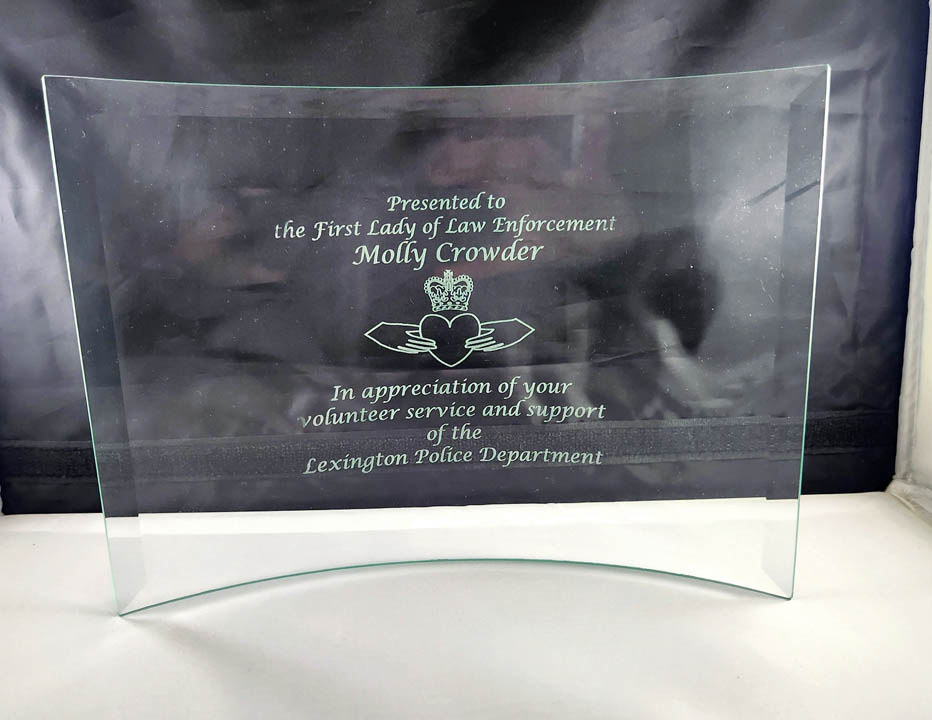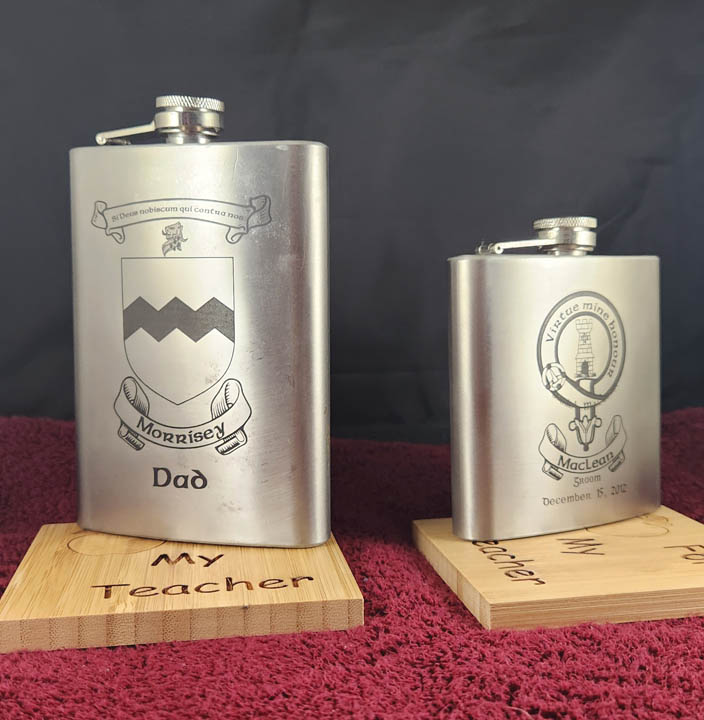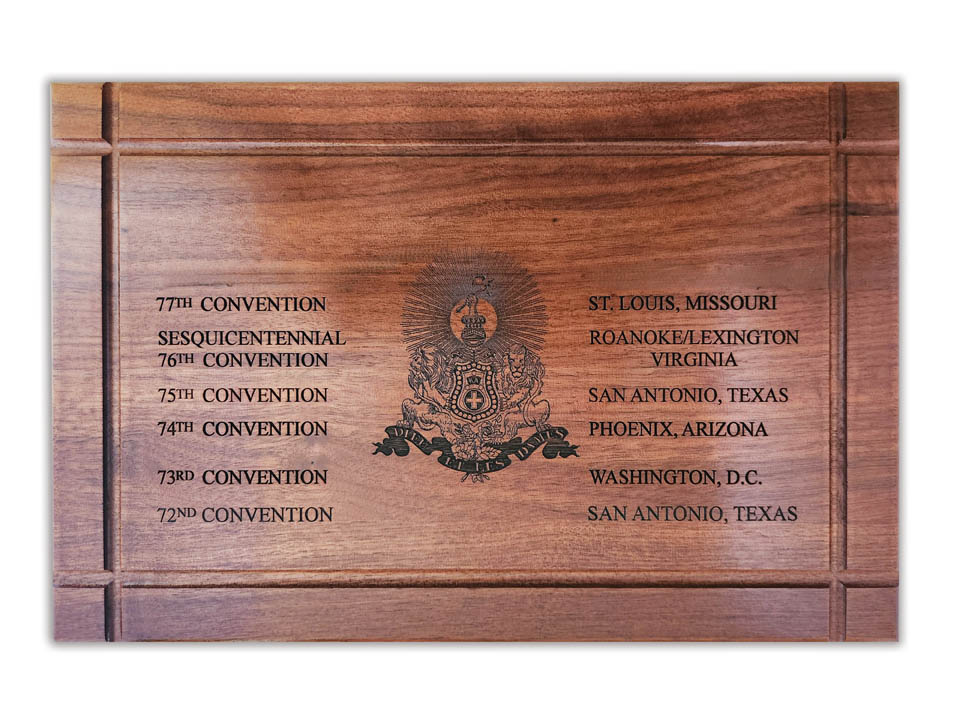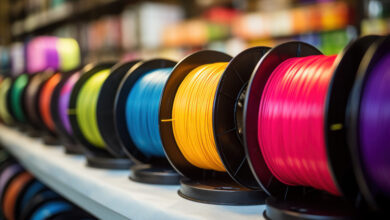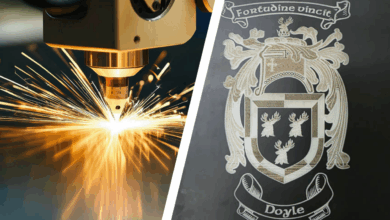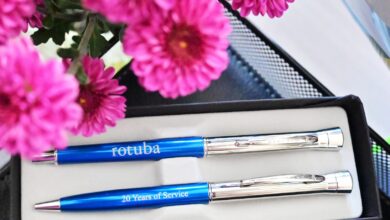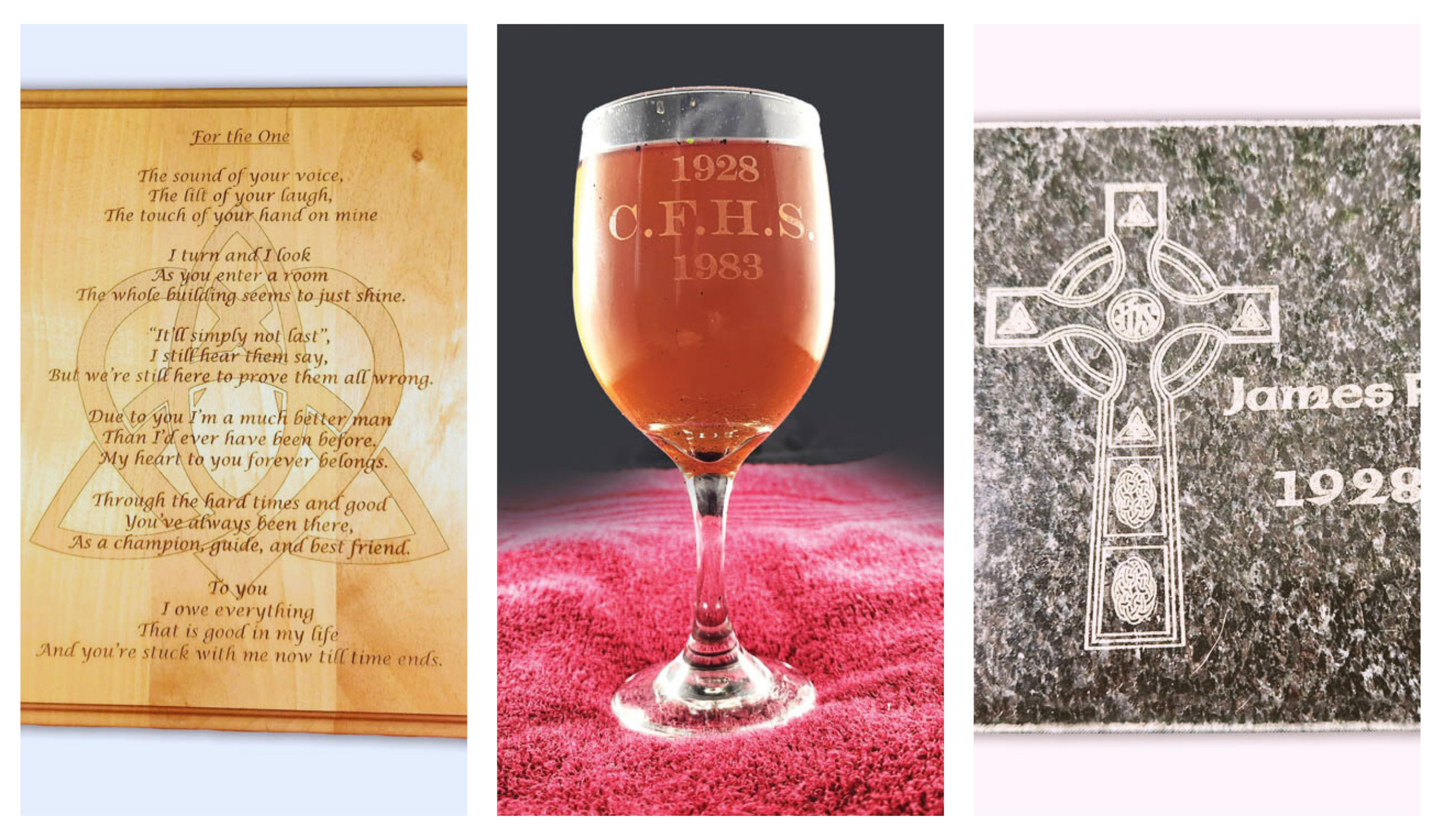
I will be as delicate as I can because this month’s article is centered around items of a sentimental nature. We can be talking about literally everything from births or funerals and every life event in between. Delicacy is vitally important, particularly when presented with something that maybe isn’t typical, but is very important to the customer. I have worked with anything from fiber-cast moldings of a family pet to what I saw as a hodge-podge of various pieces and materials assembled as an “in memoriam” piece. All the various parts were items that had meant a great deal to the deceased and, therefore, to my customer.
Custom sentimental orders & items
Definitions of sentiment include sentimental, excessive tenderness, sadness, and nostalgic. As with beauty, sentimentality is in the eye of the beholder, so it’s important to treat customer requests very seriously.
Of course, being able to use a more conventional piece makes life much simpler, so I’ll start there. I will say right off that I have not personally produced every item I’m discussing — which doesn’t mean I haven’t presented the ideas to customers. The only limit to what we can offer is our own imaginations and the materials we work with. Occasionally, a customer will bring in something that may not be workable because of machine restrictions, so always ask to see a piece before committing.
We can work with wooden or crystal ornaments, wooden plaques or shields, bamboo cutting boards, mirrors, pewter tooth cups or christening cups, photo frames, stainless steel flasks, and so on. As I said, the list of items we can work with is very long. The pieces I’ll show celebrate marriages, births, retirements, graduations, romantic gifts, reunions, and dedications — and I’m sure you can think of many more. I’ve also done funerary boxes and urns for cremains and accents to headstones. These last two items demand the most sympathetic and respectful treatment.
The gratitude of the bereaved families is one the greatest rewards you will ever receive despite the sorrow involved. One of the greatest compliments after finishing a piece I’ve had in the 20-odd years I’ve been doing this was an invitation to join the family party at Arlington National Cemetery for the interment of a three-star general under full military honors.
The other end of the emotional spectrum is weddings and births. The customer will often bring in their own ideas for graphics and text. It can make things a little easier if the engraving involves simple text. You can also gently suggest the inclusion of a simple graphic, vice versa, or both. Ironically, perhaps the hardest thing to do is a job where the customer leaves the entire text and graphic construction up to you. In these cases, it’s best to have workpieces at hand where you can prepare demo pieces to run by your customer.

Depending on the capabilities of your machinery and software, you can perhaps include photographs. Otherwise (again, depending on capabilities) you can use your imagination to create appropriate combinations of text and graphics. One note to remember: if you include text, please remember to include any appropriate attribution. In most single-piece quantities you’ll produce, it’s highly unlikely (though not impossible) that you’ll be pursued for copyright or licensing infractions as long as attribution is included. Failing to include the appropriate attribution makes this more likely, even if only by a little. Never mind the legality of using someone else’s work, it’s dishonest to let it seem like such usage stems from your own work.
Can awards and presentations come under an umbrella of sentimentality? They may seem separate categories to you, me, and perhaps to the presenter. However, there is sentimentality involved as far as the recipients are concerned. We’re perhaps fortunate in that we are likely to be presented with prepared text and editable graphics that we can use on our workpieces.
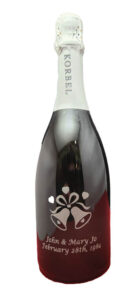
With prepared graphics, always ask if an editable graphic is available. Some artwork (including text) becomes the property of the customer after payment to the designer. Some remain the property of the designer. In those cases, the designer will occasionally be willing to release artwork to you if the customer asks the designer to do so. If not, ask if you can redraw the graphic. You might not be able to achieve 100% duplication, so again, it’s best to advise the customer in advance and have a demonstration piece to show prior to production.
You may be fortunate and be able to copy a simpler, or very clean, graphic in a non-editable format and use it directly without the need for redrawing. There are literally thousands of font styles available either for purchase or free of charge from online libraries. Just be warned that certain fonts may request attribution, but this is generally not the case for more standard font styles.
With things like corporate logos, sometimes it’s necessary to trace lettering. Obviously, you’re not going to really want to trace a swath of lettering, so try to find a representation of similar text from other sources if necessary. As always, check with your customer.
Lastly, since these sentimental pieces are almost always one-offs, you have the option of raising your price as a custom job.
